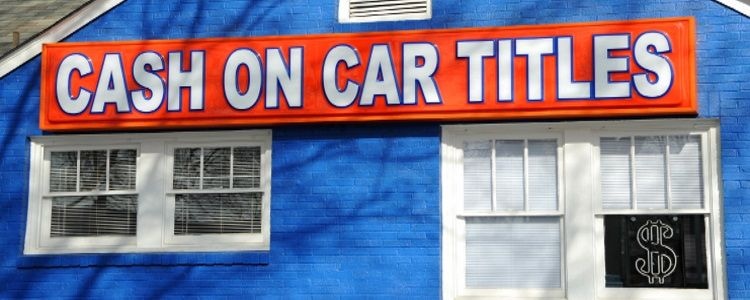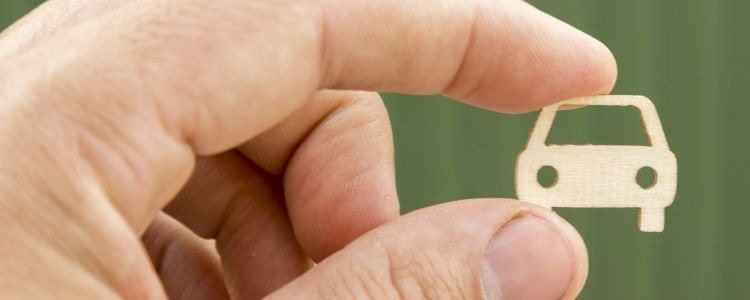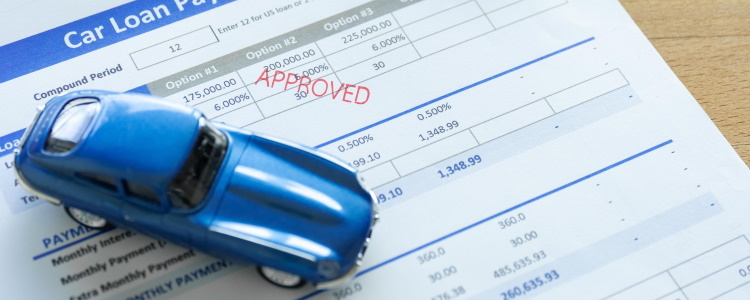When you’re trading in your vehicle, the dealership can send a check to the lender if you still have a loan on your trade-in. However, whether or not their offer is big enough to pay off your remaining balance is another thing. Here’s what you need to know.
Trading In Your Vehicle
Trade-ins are extremely common. Many borrowers – those that buy new and used cars alike – often trade in their old wheels to lower the selling price of their next ride. Out with the old and in with the new!
If you still have a loan on your vehicle, the dealership typically handles the paperwork and pays your lender themselves to release the lien so they can take over ownership. Vehicles with a loan on them have a lien on the title, which stops you from selling a car until the loan is paid off. In order to transfer ownership of a vehicle to someone else, that lien has got to be removed for the transaction to be legitimate.
If you have a loan on your car, the trade-in process generally goes like this:
- Dealership appraises your trade-in.
- Dealer makes you an offer based on an appraisal if they want to buy it.
- If you accept the offer, the dealership contacts and pays the lender that holds your title.
- Your lender issues a “release of lien” letter so you can sign ownership over to the dealership if the amount is enough to pay off your loan.
- You sign the title over to the dealership to complete the sale.
One of your biggest priorities is getting enough money to pay off your current lender. If you get enough to pay off your loan from the dealer’s offer, then things become much easier and you may not have to pay anything out of pocket.
There may be a situation where your trade-in offer isn’t enough to pay off your lender. In situations like this, you can pay off the remaining balance yourself. But what if you can’t pay the rest?
Will a Dealer Pay Off My Loan No Matter What?
The dealership isn’t obligated to pay off your total loan balance. They only have to offer you what they believe your trade-in is worth, also known as the actual cash value (ACV) of your car.
However, many borrowers have vehicles with negative equity. Negative equity is when your vehicle’s value is less than what you owe on your auto loan. If you’re in this situation, then getting an offer large enough from a dealer to pay your lender may be a struggle.
Some dealers may be able to work with you, though.
A dealership may be able to offer you the entire loan balance of your vehicle, even if the car has negative equity. Depending on how deep your car is in negative equity, you may be able to roll over that amount onto your next car loan.
Let’s say your trade-in is worth $5,000, but you owe $9,000 on your auto loan. The next car you want to purchase is $15,000. If your next lender allows it, you may be able to get $9,000 from the dealer to pay off your current auto loan, and then roll over that $4,000 of negative equity on your next loan. Your next car loan would be around $19,000 because now you’re paying off the negative equity from the previous loan and the selling price of your next vehicle.
How Much Negative Equity Can I Roll Over?
How much negative equity you can roll over onto your next car loan depends largely on the selling price of your next vehicle and the lender you're working with.
Auto lenders generally have caps on how large of a loan they can extend on a car. This is called a loan to value (LTV) ratio. Lenders compare the selling price of your next car and the loan amount you’re applying for – if the loan amount you want is much larger than the value of the vehicle, they may not approve you.
Ideally, you want to purchase a vehicle with a 100% LTV ratio. This would mean you’re buying the car for exactly what it’s worth. Lenders typically don’t approve loans if the LTV ratio is over 125%.
That being said, if you have thousands of dollars in negative equity, you may not be able to roll it over onto your next auto loan. It may be a better idea to simply pay down your current auto loan for a while since negative equity resolves itself over time.
How Trade-Ins Are Helpful
Trade-in equity can be very useful to bad credit borrowers. If you get more than enough to pay off your current lender during a trade-in, that leftover cash can be used to lower the selling price of your next vehicle. This is also a form of a down payment, which means your trade-in could help you meet a down payment requirement of an auto lender.
When you have poor credit and you’re applying for your next car loan, you’re almost always expected to have a down payment. Most bad credit lenders, including subprime lenders, require at least $1,000 or 10% of the vehicle’s selling price. If you don’t have the full amount in cash, then your trade-in could help you secure your next car loan.
On the Hunt for a Dealership?
You’re likely to find that nearly every dealership is able to accept trade-ins. However, not every dealer can assist borrowers with credit challenges. Special finance dealerships can, though, and we want to help you find one.
Finding a lender that can work with less than perfect credit can be simple if you work with us at Auto Credit Express. We’ll do the hard work of locating a dealership that’s signed up with subprime lenders so you can focus on the rest. Complete our free auto loan request form, and we’ll search for a dealer in your local area with no obligation.















